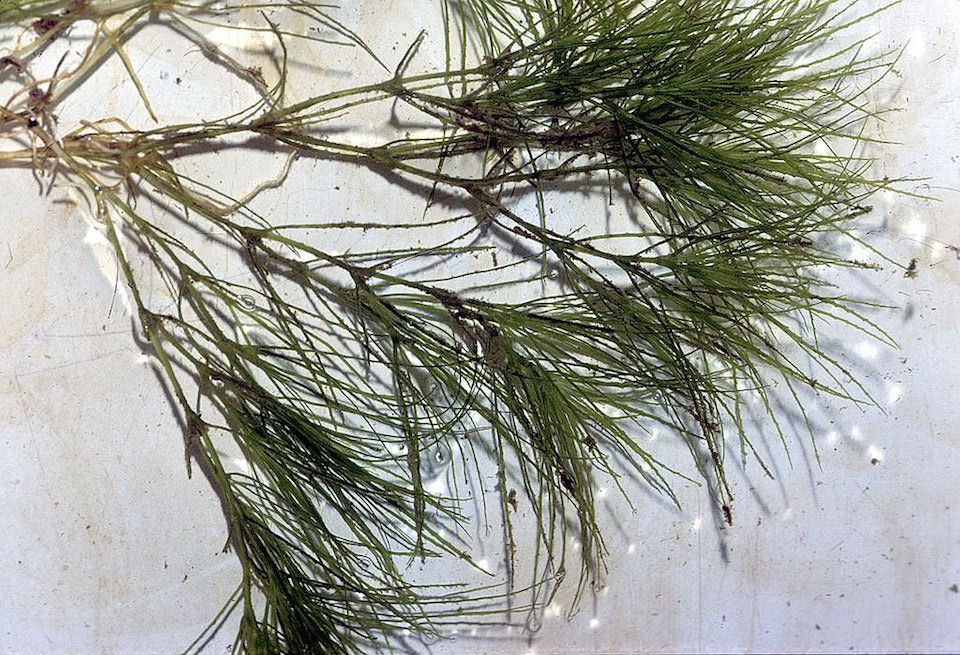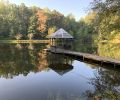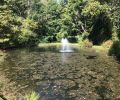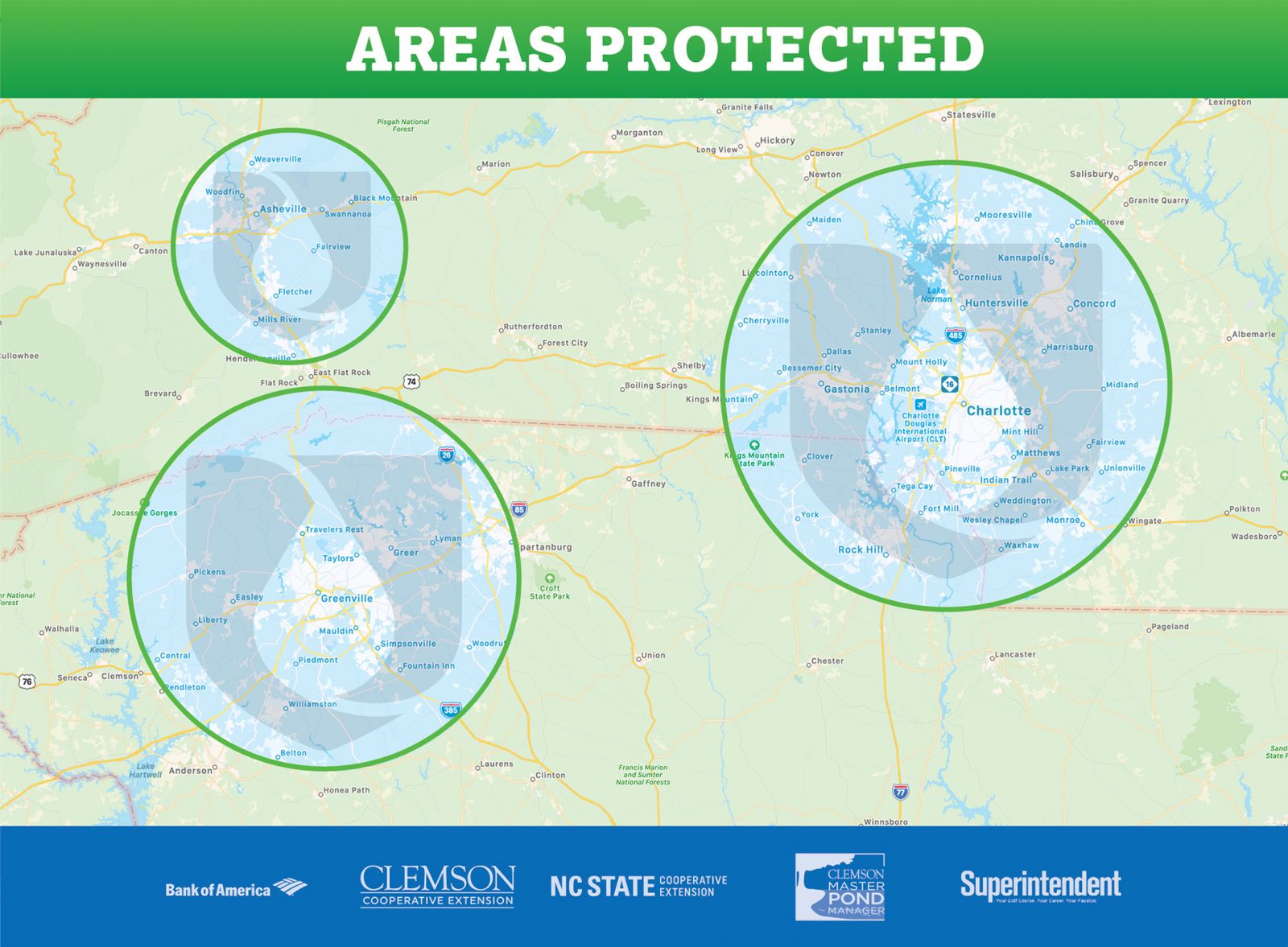Jeff owns a private pond that covers a few acres. In the summer, he loves to go boating, fishing, and swimming with his family. One day mid-summer, he noticed that every time he went boating, more aquatic plants would appear.
He wasn’t too worried and kept boating. A few weeks later he saw that the aquatic plant was now getting in the way. That’s when he decided to ask us what it was and how to make it stop for good.
After taking a look, we saw that it was Brittle Naiad (Najas minor or water nymph). Similar to Eurasian Watermilfoil, it is a rooted submersed aquatic plant that is tough to control. It happens in fresh or salty waters. Its leaves are highly toothed (3 – 12 teeth) and are up to 1 1/4 inch long and 3/16 wide with many leaves at each joint. Flowers (1/8 to 3/16 inch long) are found during summer, in the leaf axis. It has fruits and seeds that are slightly recurved, purplish, fusiform seeds with tiny pits wider than they are long around the girth. Brittle naiad is also food for waterfowl. So ducks can help spread it, too.

Brittle Naiad prefers stagnant, or slow-moving ponds, lakes, reservoirs, canals and is capable of growing in depths up to four meters. We told Jeff that the reason he saw it spread so quickly is that brittle naiad spreads by its seeds and fragments. So by continuing to boat, he was really spreading the aquatic weed all around his pond.
We reassured him that this happens all the time for pond owners and HOAs (homeowners associations) who haven’t been informed about lakes and ponds needing constant care.
Jeff decided to become a member so he wouldn’t have to worry about his pond being healthy for generations to come.
Brittle Naiad During Each Season:
SPRINGTIME- It’s reliant mostly on seed for growth, this species develops early in the spring and starts developing bushy patches.
SUMMERTIME- It will start quickly growing in summer and produce new seed in August. It seems to favor growing inside stands of other plants and will be seen intermixed with all other species, often favoring bright green clumps among the others. If you find these bright green clumps and flip into them, the plants are more brittle, and hangups will be less common.
FALL- It starts to break up quickly in the fall. That’s much earlier than other species. Big stands of the plant will seem to go away, opening up water more readily than other species.
WINTER- It will die completely back, leaving only the seed behind.
IN SUMMARY:
- Brittle naiad is hard to control because the plant can grow from either the seeds or from plant fragments that have broken free.
- As with most invasive species, preventing the spreading of aquatic weeds is easier than eradication.
- Found growing among other plant species.
- It’s thought of to be one of the most significant food sources for waterfowl, who eat the whole plant. And it also offers habitat for aquatic invertebrates and little fish.
- Spreads quickly by boat and waterfowl.
Taking care of your lake or pond is not a luxury, it’s a necessity. As your local pond management professionals, we’ve been there. Let us help guide you as a member to protect, plan, and preserve your pond or lake if you live in the Charlotte NC, Asheville NC, and Greenville SC areas.
Get started. And become a member today!




